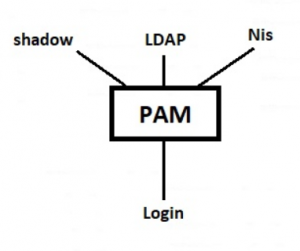 OK folks, so today PAM finally landed in Slackware.
OK folks, so today PAM finally landed in Slackware.
What does that mean? Not much actually. Your Slackware will keep functioning as before. The new functionality offered by the Pluggable Authentication Modules is not directly visible. Let me simply copy the ChangeLog.txt announcement verbatim:
Wed Feb 12 05:05:50 UTC 2020 Hey folks! PAM has finally landed in /testing. Some here wanted it to go right into the main tree immediately, and in a more normal development cycle I'd have been inclined to agree (it is -current, after all). But it's probably better for it to appear in /testing first, to make sure we didn't miss any bugs and also to serve as a warning shot that we'll be shaking up the tree pretty good over the next few weeks. I'd like to see this merged into the main tree in a day or two, so any testing is greatly appreciated. Switching to the PAM packages (or reverting from them) is as easy as installing all of them with upgradepkg --install-new, and if reverting then remove the three leftover _pam packages. After reverting, a bit of residue will remain in /etc/pam.d/ and /etc/security/ which can either be manually deleted or simply ignored. While there are many more features available in PAM compared with plain shadow, out of the box about the only noticable change is the use of cracklib and libpwquality to check the quality of a user-supplied password. Hopefully having PAM and krb5 will get us on track to having proper Active Directory integration as well as using code paths that are likely better audited these days. The attack surface *might* be bigger, but it's also a lot better scrutinized. Thanks to Robby Workman and Vincent Batts who did most of the initial heavy lifting on the core PAM packages as a side project for many years. Thanks also to Phantom X whose PAM related SlackBuilds were a valuable reference. And thanks as well to ivandi - I learned a lot from the SlackMATE build scripts and was even occasionally thankful for the amusing ways you would kick my ass on LQ. ;-) You're more than welcome to let us know where we've messed up this time. The binutils and glibc packages in /testing were removed and are off the table for now. I'm not seeing much upside to heading down that rabbit hole at the moment. Next we need to be looking at Xfce 4.14 and Plasma 5.18 LTS and some other things that have been held back since KDE4 couldn't use them. Cheers! :-)

Also today, I uploaded a fresh batch of Plasma5 packages to my ‘ktown’ repository. This time, the ‘latest‘ and ‘testing‘ versions of the repository are different!
The regular aka ‘latest’ repository content is meant for an up-to-date Slackware-current without PAM. The ‘testing’ repository on the other hand is compiled against a pam-ified Slackware and can be used if you have added the new ‘testing’ PAM packages of Slackware-current to your system.
The packages that picked up PAM support are: kscreenlocker and plasma-workspace (in the ‘plasma’ directory), and sddm-qt5 (in ‘plasma-extra’). A new package has been introduced as well: kwallet-pam (in the ‘plasma’ directory).
I expect that Plasma5 gets folded into the distro soon after PAM moves out of testing and into the core distro.
The new KDE-5_20.02 batch is now available for download from my ‘ktown‘ repository. As always, please remove KDE4 first (check the README for instructions if you still need those). These packages will not work on Slackware 14.2.
What else is new in the February 2020 release
This month’s KDE Plasma5 for Slackware contains the KDE Frameworks 5.67.0, Plasma 5.18.0 and Applications 19.12.2. All this on top of Qt 5.13.2.
Deps:
This month no updates to the ‘deps’ section (except in ‘testing’ where I removed cracklib and libpwquality since those are now part of the Slackware PAM related packages).
Frameworks:
Frameworks 5.67.0 is an incremental stability release, see: https://www.kde.org/announcements/kde-frameworks-5.67.0.php.
Plasma:
Plasma 5.18.0 is the first release of 5.18 LTS (Long Term Support). The focus for this new release cycle has been on improving the notification system, a much improved audio-volume systray widget, streamlining the desktop settings (no more ‘cashew’ menu in the top right) and a much better integration of GTK+ based applications with the Plasma desktop theme, through the use of client-side decorations. Also, the graphical performance has been tweaked with less graphical glitches and Nvidia GPU statistics displayed in KSysGuard. See https://www.kde.org/announcements/plasma-5.18.0.php for the full announcement including several video’s portraying the strong points of KDE’s desktop environment.
Plasma-extra;
In plasma-extra I updated latte-dock and rebuilt sddm-qt5.
Applications;
Applications 19.12.2 is a stability and bugfix update for the 19.12 cycle. Remember that I still call this ‘Applications‘ but KDE folk prefer the new name ‘Releases‘. See https://kde.org/announcements/releases/2020-02-apps-update/
Applications-extra:
In applications-extra I updated kdevelop-pg-qt, kdevelop, kdev-php, and kdev-python..
Telepathy:
KDE Telepathy is no longer part of my ‘ktown’ distribution of KDE Plasma5.
Where to get it
Download the KDE-5_20.02 from the usual location at https://slackware.nl/alien-kde/current/ or one of its mirrors like http://slackware.uk/people/alien-kde/current/ .
Check out the README file in the root of the repository for detailed installation or upgrade instructions.
Development of Plasma5 is tracked in git: https://git.slackware.nl/ktown/ .
A new Plasma5 Live ISO is going to be available soon at https://slackware.nl/slackware-live/latest/ (rsync://slackware.nl/mirrors/slackware-live/latest/) with user/pass being “live/live” as always. I am still working on an improved ‘setup2hd‘ and depending on the amount of work (and setbacks) I may decide to leave the ‘old’ setup2hd script in the ISO for now.
Have fun! Eric
Recent comments